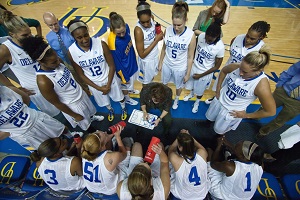Even the best thinking on redesigning schools to personalize learning will be for naught if school and district design teams can’t lead and manage the change process that a move to PL entails. In schools, that process means getting all teachers on board, engaging all students in the new approach, and making sure parents understand and support it. Not attending to these fundamentals can create a fast track to failure.

A serious shift toward PL severely disrupts the status quo. It uproots what is taught and how, what the expectations are for students and how they are assessed, and how teachers plan and execute lessons. And because true PL hands over some control to students, it injects an element of unpredictability into everyone’s work. Of course, teachers can always close their classroom doors and teach the way they always have. Students can revolt against an approach that might make it harder for them to get good grades. And parents can vocally resist out of fear and distrust of the new school order. But the uneven implementation that inevitably results has real-world consequences. It’s hard on students, who experience radically different approaches and expectations from classroom to classroom. And it’s hard on teachers, calling into question the point of sinking so much time and effort to make the new approach effective and sustainable, and dampening enthusiasm of those working hard to do so.
Schools with all sorts of redesign experience are clear on this point: effectively managing change depends entirely on a clear vision and rationale. Those leading the change process must be able to make a compelling case for upending the traditional mode of teaching and learning. The “why” is far more important than the “what.”
In our field visits, we heard stories of teachers who were once harsh critics of PL becoming its most vocal advocates. One district leader described a tough football coach (a real skeptic of PL) breaking down in tears when he realized the positive impact that personalizing the school was having on students. But the more common story we hear is from principals and teachers frustrated that only a small slice of teachers in their schools are on board with PL. Schools can struggle to pull off a shift to personalized learning, especially among more veteran teachers wedded to old ways. This issue is all the more daunting in unionized schools.
At a recent gathering of school leaders who have successfully implemented schoolwide PL designs, we heard that when considering a school redesign it’s important to:
• Start with, and stay focused on, a vision of the graduate you want—their skills and attributes—not the school or classroom you want.
• Use data to analyze which groups of students aren’t doing well and how all students could do better.
• Survey alumni to identify their skill gaps in college.
• Survey current students on what they want from their education. Teachers want to do the right thing for kids; student ideas and priorities may have more sway than those of administrators.
• Survey both teachers and students on what most dissatisfies them and redesign the school around addressing those concerns.
• Run a SWOT analysis (Strength, Weakness, Opportunity, Threat) to demonstrate the need for urgent action (e.g., students won’t succeed in college without the ability to self-direct).
• Appoint your most resistant teachers and parents to design groups and take them on model school visits.
So what’s the takeaway for districts or charter networks that want to move to PL at scale? They need to heavily invest in training their leaders on not just instructional coaching, but on managing change. This isn’t about creating a super hero principal but a strategic one. Unfortunately, both schools of education and districts typically ignore change management in leader development.
One district we visited last winter as part of our PL research stood out as an exception. The school system realized that their principals often excelled in instructional leadership, but struggled when it came to developing a vision for their schools and managing the changes needed to fulfill that vision. The district has started asking principals to read John Kotter, the change management guru, and revamped its leadership training programs and coaching supports to include change management elements. They now teach principals how to create and carry out a vision, build school and community support for change, develop an organizational culture, etc.
To be sure, PL can be an effective classroom approach. But its transformative potential lies in schoolwide and districtwide redesign that moves away from generic offerings and outdated and ineffective instructional practices. That’s why true personalized learning will live or die on the ability of visionary education leaders to get their entire organizations to adapt to—and fully own—a plan for 21st century learning.
— Robin J. Lake
Robin J. Lake is the director of the Center on Reinventing Public Education at the University of Washington.
This post originally appeared on The Lens. This is the ninth in their series of “Notes From the Field” on personalized learning.


